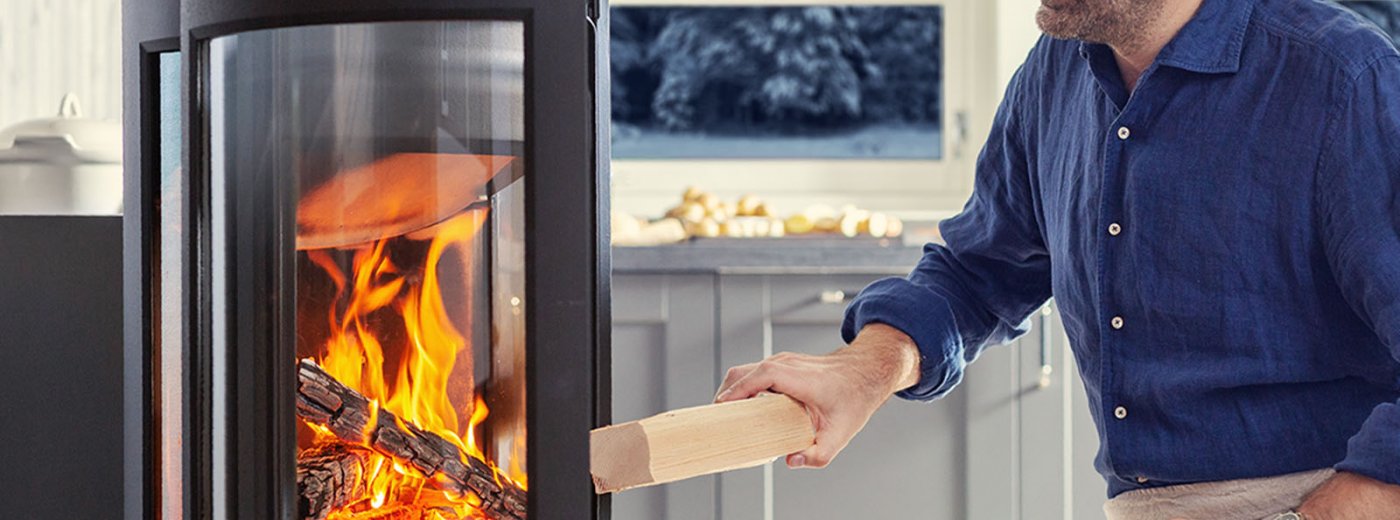How a wood burning stove works
Ever wondered what makes a wood burning stove so magnificent?
Ever wondered what makes a wood burning stove so magnificent?
One of the oldest and still most trusted forms of heating is the wood burning stove. These highly efficient units were traditionally, the centerpiece of the home before the inception of modern central heating and electrical appliances. They were used not only to heat the home, but to cook all of the meals for the family. Today, not many people actually use their stoves for cooking as modern appliances have replaced them. But the fact still remains, that these devices are among the most efficient ways to heat any home and best of all, they utilize a renewable and inexpensive resource for the heat. Here is a guide as to how they really work, so when you have your new stove installed, you will know exactly what is going on within the unit to produce such warm and inviting heat.
People often get a wood burning stove and a fireplace mixed up. They are not really the same thing at all. The heat that comes from a stove is more efficient than with a fireplace because the air intake is controllable within the unit. An open fireplace generally has air flow from the home coming in from the front, fueling the fire. Air also comes from the flue and the ventilation from the flue allows the smoke to escape instead of into the home, provided the flue is kept clean.
A stove works to control the air brought into the unit. Air flow is still very much important as a complete lack of air would not feed the fire and simply dampen the flames. With each stove, you will find ventilation holes and an air control valve. The valve can be opened completely to allow for maximum air flow for the hottest flame and closed for less heating and a cooler flame.
A stove is much more than a box to hold the wood with good air flow. The materials used throughout the stove are important as well. Not all metals conduct heat as well as others and throughout the years, cast iron has proven to be among the most efficient materials for building these types of units. It is inexpensive, plentiful, recyclable, durable, and lasts for many years. It can also stay warm for a long time after the fire is out, so the residual radiant heat from the unit can maintain the temperature of the room for quite some time.
When the air comes into the unit, it enters the fire box. The fire box is the main part of the unit and most people simply believe that the unit is entirely comprised of cast iron. The truth is that the iron stove can be efficient enough on its own, but it is the insulated bricks that surround the interior that make it more efficient. The bricks hold even more of the heat and keep the wood from simply sitting on the bottom of the unit making air flow easier within the system.
Looking for a new wood stove? Take a look at all of our different wood stoves!
It is not simply a matter of keeping all of the heat within the unit. The transfer of fresh air into the firebox to allow the flames to grow is only part of the process. The heated air does have to have somewhere to go. Some modern wood burning stoves maintain a blower system that allows some of the heat to be blown into the room improving the overall efficiency of the heating unit, but the additional air still needs somewhere to vent out of the home, otherwise the entire unit would be nothing but a fire hazard.
The heated air goes up naturally and therefore, a standard flue gives a place for the smoke and unused air to vent out of the home. Some homes that have older flues may require the use of a tube inserted in the flue (a chimney liner) to allow for easy cleaning and for the smoke to vent properly. If there is no existing flue within the home, the installer will install one for you. The flues can either go straight out of the ceiling, or vent through a small flue in the wall of the home depending on the requirements of the stove and the home itself.
Now that you know how a wood burning stove works, you can feel good about having one of them in your home. Even if your home is equipped with modern forms of heating such as a central unit, it is a smart investment to have a wood burning stove. The units can lower your heating bills substantially and are vital for heating the home when power outages happen. Every home can use a wood burning stove and even if you believe that your home is too small for one, there will be a unit right for you. Ask your registered local stove dealer (HETAS recommended) for more information today.
